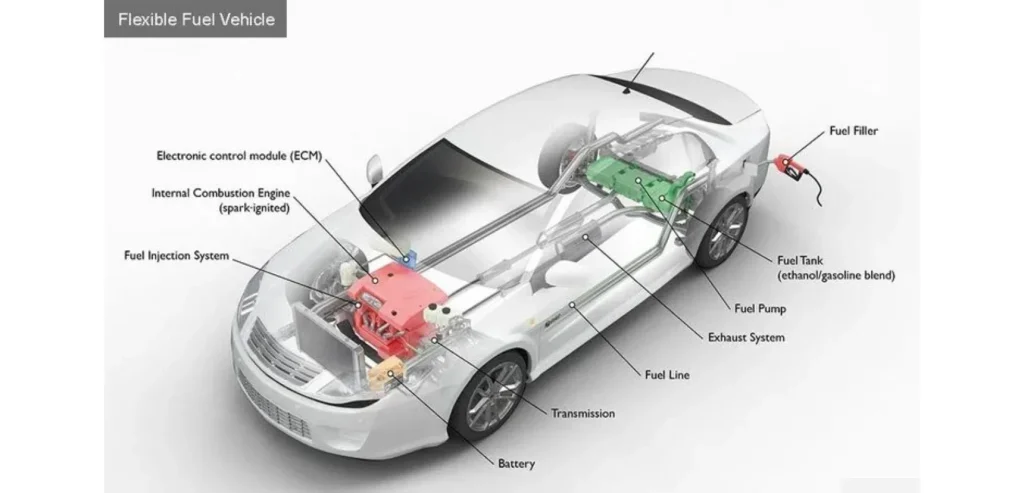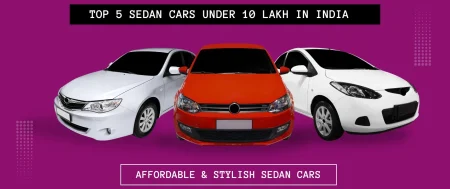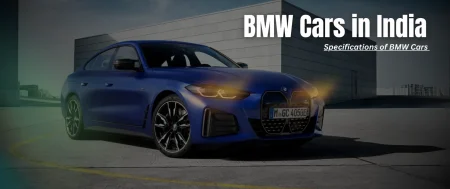Flex-fuel vehicles, a marvel of modern engineering, offer a promising solution to the pressing environmental challenges faced by the automotive industry. These vehicles, akin to conventional petrol cars, operate on a blend of ethanol and petrol, offering flexibility in fuel usage and promoting sustainability. Let’s delve deeper into how flex fuel vehicles work, their benefits, drawbacks, components, challenges, and the future landscape, especially in the context of India.
Understanding Flex-Fuel Vehicles
Flex-fuel vehicles (FFVs) utilize conventional internal combustion engines with adaptations to accommodate varying ethanol blends in fuel. Specially designed engines, sensors, and fuel delivery systems enable these vehicles to adjust to ethanol content, optimizing combustion for efficient performance.

Benefits of Flex Fuel-Vehicles
- Reduced Carbon Emissions: Flex-fuel vehicles have the potential to significantly reduce carbon emissions, along with other harmful pollutants like NOx and SOx.
- Energy Security: Utilizing domestically produced ethanol reduces dependency on foreign oil imports, enhancing energy security.
- Economic Benefits: Ethanol production fosters economic opportunities for farmers and the agricultural sector, utilizing locally sourced renewable resources.
Drawbacks of Flex-Fuel Vehicles
- Reduced Efficiency and Power: High ethanol blends can lead to decreased fuel efficiency and slightly lower power output due to ethanol’s lower calorific value. Maintenance costs may also increase due to ethanol’s corrosive nature.
- Availability: Ethanol blending stations are currently limited, and ethanol production is in its nascent stages in many regions, including India.
Components of Flex-Fuel Vehicles
Key components include the engine control module (ECM), fuel injectors, oxygen sensors, and flex fuel sensor. These components work together to monitor and adjust engine performance based on ethanol-gasoline ratios.
Challenges Faced
Addressing infrastructure needs and enhancing fuel efficiency and emissions control are primary challenges in the widespread adoption of flex-fuel vehicles. Additionally, reducing production and ownership costs while increasing awareness are crucial for faster adoption rates.
Future of Flex-Fuel Vehicles in India
India is witnessing a growing interest in flex-fuel vehicles as part of its sustainability initiatives. The government’s targets to reduce carbon emissions align with the introduction of flex-fuel vehicles, offering an eco-friendly fuel option sourced domestically.
Upcoming Flex-Fuel Cars in India
- Maruti Suzuki WagonR Flex Fuel: Maruti Suzuki aims to make its complete lineup flex-fuel ready by 2025, with the WagonR prototype boasting significantly lower carbon emissions and flexibility in fuel blends.
- Mahindra XUV300 Flex Fuel: Mahindra’s prototype offers flexibility in ethanol blends and promises efficient performance, slated for market release by 2025.
- Toyota Innova Hycross Flex Fuel: Toyota showcases the possibility of using ethanol-rich blends in its hybrid vehicles, contributing to reduced carbon emissions.
- E20 Flex Fuel Cars: Several carmakers have announced E20-compliant vehicles, offering flexibility in fuel choice.
Conclusion
Flex-fuel vehicles represent a promising step towards a greener automotive industry. However, challenges such as infrastructure development and cost reduction must be addressed for widespread adoption. With government support and technological advancements, flex-fuel vehicles could play a pivotal role in India’s journey towards sustainability.
FAQs
- Flex Fuel and Car Compatibility: Flex fuel is generally beneficial for flex-fuel cars, offering fuel flexibility and environmental friendliness.
- Cost Comparison: Flex fuel may be cheaper than petrol, depending on region and fuel prices.
- Availability in India: Flex fuel is gradually becoming available in India, with expected expansion in the future.
- Cost of Flex Fuel Cars: Official prices of upcoming flex fuel cars in India are yet to be announced.
- Launch Timeline: Flex fuel cars are expected to launch soon, with several automakers gearing up for release.
In summary, flex fuel vehicles hold immense promise for a sustainable automotive future, offering a path towards reduced emissions and enhanced energy security. With concerted efforts from governments, manufacturers, and consumers, flex fuel vehicles could drive significant positive change in the transportation sector.






